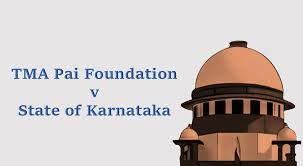Supreme Court's Ruling on Coastal Regulation Zone Violations
- ByAdmin --
- 02 May 2025 --
- 0 Comments
The Supreme Court of India has recently delivered a significant judgment concerning violations of the Coastal Regulation Zone (CRZ) Notification, 2011.
The decision highlights the judiciary's growing concern over protecting India’s fragile coastal ecosystems and ensuring compliance with environmental norms.
This judgment has implications for coastal development projects, tourism, and real estate expansion across India's coastline.
Legal Framework Involved
- Environment (Protection) Act, 1986:
- Enabling legislation under which CRZ notifications are issued.
- Enabling legislation under which CRZ notifications are issued.
- Coastal Regulation Zone Notification, 2011:
- Classifies coastal stretches and imposes restrictions on industries, operations, and processes.
- Classifies coastal stretches and imposes restrictions on industries, operations, and processes.
- Constitution of India:
- Article 21: Right to life includes the right to a healthy environment.
- Article 48A: Directive Principle to protect and improve the environment.
- Article 51A(g): Fundamental duty to protect the natural environment.
Highlights of the Supreme Court’s Ruling
1. Strict Adherence to CRZ Rules
- The Court reiterated that no construction or activity violating CRZ norms would be tolerated, irrespective of economic or tourism interests.
- Even minor deviations from the approved coastal management plans would attract legal consequences.
2. No Retrospective Regularization
- Unauthorized constructions violating CRZ regulations cannot be retrospectively regularized.
- Demolitions must occur where violations are found, even if structures are partly completed or occupied.
3. Restoration of Coastal Ecology
- The judgment stressed the restoration of natural coastal systems like sand dunes, mangroves, and wetlands.
- Authorities are directed to conduct Environmental Impact Assessments (EIA) before granting any new permissions in sensitive zones.
Key Judicial Observations
- "Environmental protection must prevail over commercial interests where conflict exists."
- The Court emphasized the “precautionary principle” and “polluter pays principle”, as embedded in Indian environmental jurisprudence.
- Any compromise with coastal regulations endangers not just biodiversity but also exacerbates the impact of natural disasters like cyclones and floods.
Major Case Reference
- Vaamika Island v. Union of India (2023):
- Supreme Court ordered the demolition of illegal constructions on Vembanad Lake islands in Kerala.
- The Court rejected the plea for regularization, citing violation of CRZ norms.
- Supreme Court ordered the demolition of illegal constructions on Vembanad Lake islands in Kerala.
Challenges in CRZ Enforcement
1. Inconsistent Implementation
- Different coastal states interpret CRZ norms variably, leading to legal uncertainties.
2. Lack of Monitoring Mechanisms
- Absence of real-time monitoring allows unauthorized developments to flourish undetected.
3. Conflict with Economic Development
- Tourism, hospitality, and real estate sectors often lobby for relaxed norms, creating tension with environmental mandates.
Government’s Role and Recommendations
- Ministry of Environment, Forest and Climate Change (MoEFCC) must ensure:
- Regular audits of coastal projects.
- Public transparency in Environmental Clearance processes.
- Strengthen State Coastal Zone Management Authorities (SCZMA).
- Deploy technology like satellite imagery and GIS mapping to detect violations early.
Conclusion
The Supreme Court’s firm stand on Coastal Regulation Zone violations reaffirms the constitutional mandate to protect India's coastal and marine ecosystems.
While development is important, it cannot come at the cost of environmental degradation.
Going forward, a balanced approach involving strict compliance, proactive governance, and sustainable planning is essential to preserving India's coastlines for future generations.
































































































































































































































































































































































































































































































































































































































































































































































































































































































































0 comments